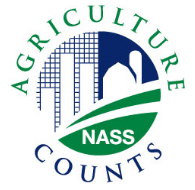It is the time of year when land owners and farmers negotiate lease agreements for the crop year ahead. One of the toughest parts of negotiation is having a handle on what is a fair price. The USDA National Agricultural Statistic Service (NASS) does an annual survey to estimate average prices for a specific region. The survey summary does not offer a range from their results, but an annual average is provided. Certainly farm size, soil type, and location influence lease rates. A large, 300 acre field would be more attractive to rent than 15 acres, and would generally be more valuable to rent. While the NASS Survey Report only provides average prices, it does offer an unbiased place to start negotiations.
Non-irrigted or dryland farm acres are commonly rented or leased in Northwest Florida. Table 1 above shows the variation of average dryland farm rent by county, which ranged from $39/acre in Holmes County to $84/acre in Escambia. Some counties have enough survey results to report individually, while others are grouped in a category called “other counties”. The average rental rate for non-irrigated crop land in the Panhandle was $59/acre in 2013.
Since there are not as many irrigated farms, NASS reports their survey results by region, instead of by county. Irrigated crop land is generally more productive and certainly more consistent, so the lease rates are generally much higher per acre. Table 2 shows the variation in irrigated farm lease rates in the tri-states region, with an average of $154/acre for the area.
Pasture lease rates are considerably lower than crop land. Mainly because livestock generate a much lower return per acre. Table 3 illustrates the range of pasture rent from $24/acre in Walton County to $38/acre in Santa Rosa. The average pasture rent for the Panhandle was $29/acre in 2013.
The other challenge that farmers and ranchers face is knowing what is a fair rate to pay their hired labor. NASS only reports farm workers in general categories, so the averages provided in Table 4 may not fit specialized categories of workers. NASS does not provide a regional or by county hired worker wage report, so this information came from across the state of Florida.
The USDA’s National Agricultural Statistic Services offers a wide range of additional information. To look at the information provided in this article and other information from their surveys go to: http://quickstats.nass.usda.gov/
- November 2025 Weather Summary & Winter Outlook - December 5, 2025
- Friday Feature: The History of Beekeeping - December 5, 2025
- Friday Feature:Malone Pecan Festival Tractorcade - November 21, 2025





